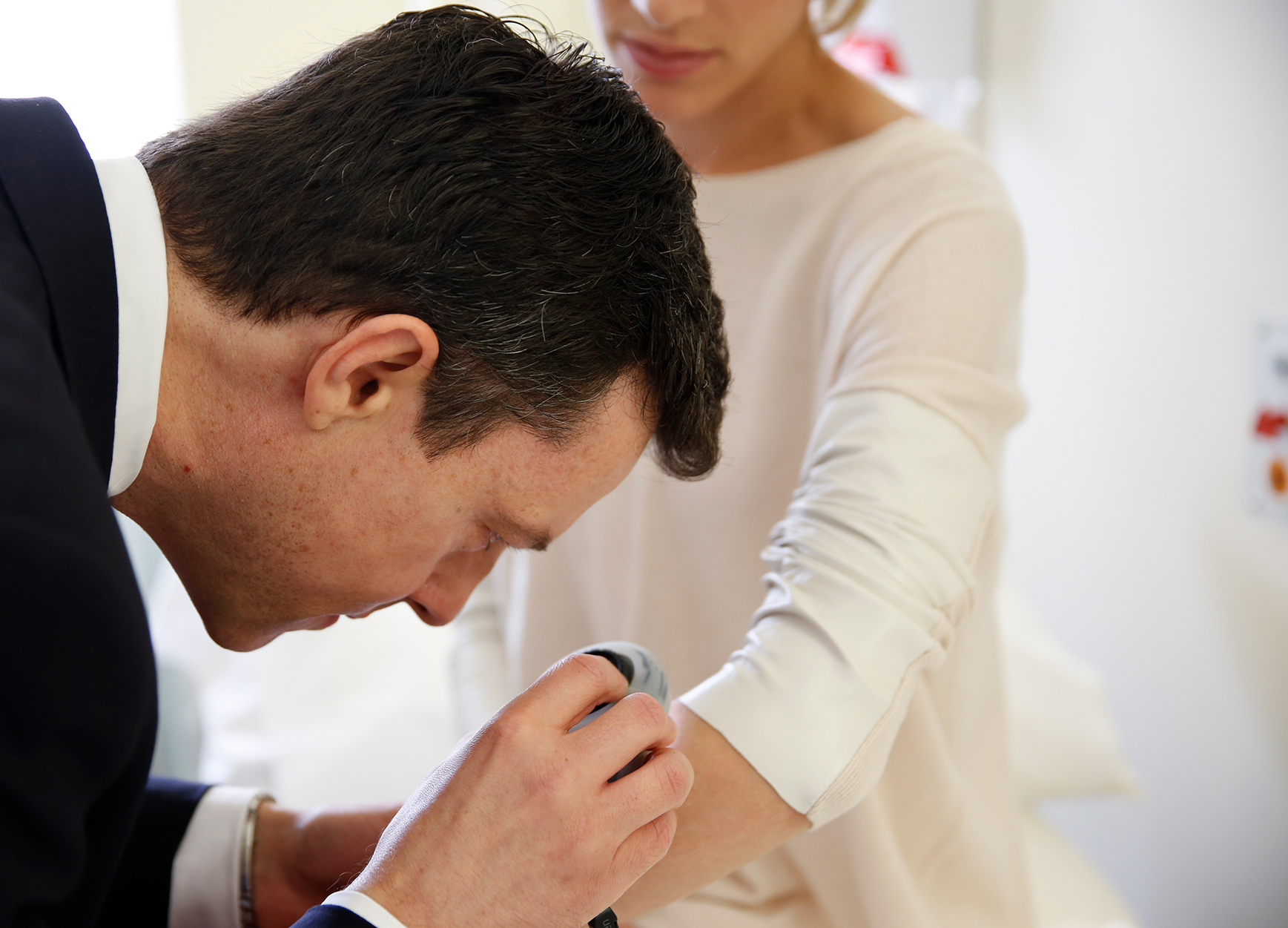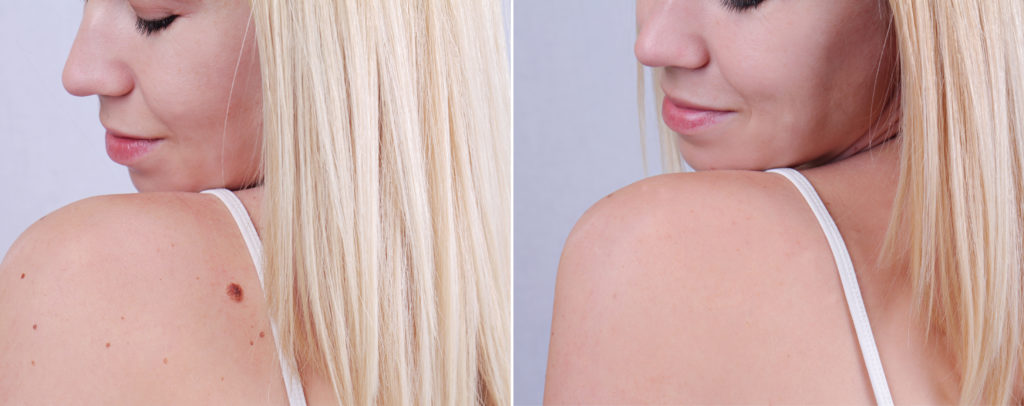
Everything you need to know before having a mole removed
Mole removal is a safe and common procedure with thousands of moles removed every year in the UK for both medical and cosmetic reasons. Whatever the reason for having your mole removed, it’s good to be informed, to know why and when removal is best advised and what to expect.
Medical reasons for mole removal
The main reason for removing a mole is when there is a suspicion it may be a skin cancer. The majority of cancerous moles come from new spots: the American Academy of Dermatology states that less than one-third of melanomas come from an existing mole. By removing the mole and an area of normal skin around it, the chances of any cancerous or precancerous cells being left behind are reduced and the chances of preventing further growth are increased.
Cosmetic reasons for mole removal
A mole may be benign (noncancerous), however, you may wish to have a benign mole removed for cosmetic reasons. Perhaps the mole is on an exposed area of your body such as your face, neck arms and hands or another area of your body that causes discomfort or embarrassment. Removing a mole for cosmetic reasons is increasingly common: a 2015 study found the number of British people seeking removal of a benign mole for cosmetic reasons had increased by 127% in just one year. Scarring from mole removal can vary, however, with todays’ advanced techniques and a skilled surgeon, scarring is generally minimal.
“A 2015 study found the number of British people seeking the removal of a benign mole for cosmetic reasons had increased by 127% in just one year”
Mole Biopsy
Checking your moles often for any visual changes can help you spot risk factors early, but the safest option is to see a Dermatologist for regular check-ups, also known as mole screening. If your Dermatologist wants to check a mole for skin cancer or melanoma, they will perform a biopsy. The mole is removed in a procedure under local anaesthetic. You will be given a local anaesthetic by an injection at the place on your body where the biopsy will be taken from. The local anaesthetic may sting a little when it is injected, however the skin will then go numb and the operation should be pain-free.
The mole is then sent for examination under the microscope by a specialist pathologist who will determine if the mole is malignant or benign.
Methods of mole removal
The most common forms of mole removal are:
Shave excision
This procedure is best for raised moles that aren’t too deep in your skin.
- The lesion is scraped or shaved off using a very sharp blade, leaving a graze or small depression in the skin
- The bleeding is stopped using an electric cautery machine. This procedure does not require stitches
- A scab will form over the surgery site and may take up to two weeks to fully heal
- This procedure usually leaves a pink scar which fades into a faint white scar
Excision with stitches
This is for moles that lie flat on the surface.
- The entire mole is removed with a small amount of normal skin around the edge.
- There will be several stitches both above and below the skin surface.
- The biopsy normally heals as a straight line that is usually three to four times the length of the lesion being removed.
What are the risks of having a skin biopsy?
All treatments and procedures have risks. The risks associated with having a skin biopsy are:
Pain
Local anaesthesia is usually effective for about two hours. The wound often feels tender after this time. Paracetamol tablets may be taken for pain relief as directed.
Bleeding
It is normal for a small amount of blood to come through the dressing. Any heavier bleeding can be stopped by applying firm pressure to the dressing for 15 minutes. If bleeding continues, you need to seek medical assistance.
If you have a large swelling under the wound, you may have had a more significant bleed. Any large swelling after surgery needs medical attention quickly, so go to your nearest Accident and Emergency department.
Bruising
It is normal to have some bruising around the surgery site, which will settle. The forehead, scalp and eyelids often bruise more easily than other sites.
Infection
Rarely a wound can become infected, and this will show up as increased pain, swelling, discharging pus and redness at the site of the wound 48-72 hours after surgery. If you are concerned that the wound has become infected, you should contact your Doctor. Infections can be treated with antibiotics. It is important that infected wounds are properly examined and treated.
Scarring
You will always have a scar following a skin biopsy as it is impossible to cut the skin without leaving a mark. The aim is always to leave you with the smallest scar that is possible for the procedure. Individuals will vary in the way they heal so not all scars will look the same.
The stitch line is likely to be red initially but this redness fades over a period of weeks to months. You will be left with a permanent scar in the area, the length and width depends of the type on operation performed and can sometimes be larger than the lesion being removed.
Some patients will produce a scar that is thicker than expected; this is called a hypertrophic or keloid scar. Certain areas such as the chest and back are more susceptible to this type of scarring.
Reducing scarring following removal of a mole
Your Dermatologist will provide advice with regards to minimising the risk of scarring and how to protect your skin during the healing process:
- Minimise sun exposure and where possible avoid sun exposure completely.
- Keep the area moist and clean. Petroleum jelly under a bandage may reduce scarring while the wound heals. Once the scar tissue has formed, it may be recommended to use a silicone gel or silicone strips for a few hours daily.
- Once the wound has healed and the scab or crust is gone, you can massage the area gently. This invigorates the skin which stimulates collagen and aids the healing process.
- In some cases, your Dermatologist may also suggest laser therapy or corticosteroid injections.
Who should remove your mole?
The most qualified person to decide if a mole should be removed is a Consultant Dermatologist. Only a suitably qualified professional such as a Consultant Dermatologist or Plastic surgeon who specialises in surgical skin procedures should remove a mole. This helps minimise the risk of scarring or anything being missed during the diagnosis and removal stages. Patients can either self refer direct to a reputable Dermatologist or Dermatology Clinic or be referred by their GP.
